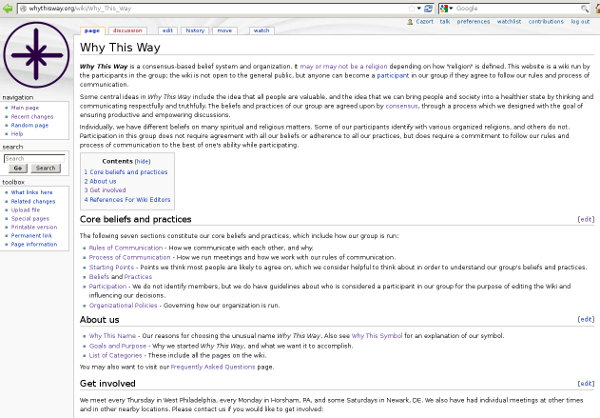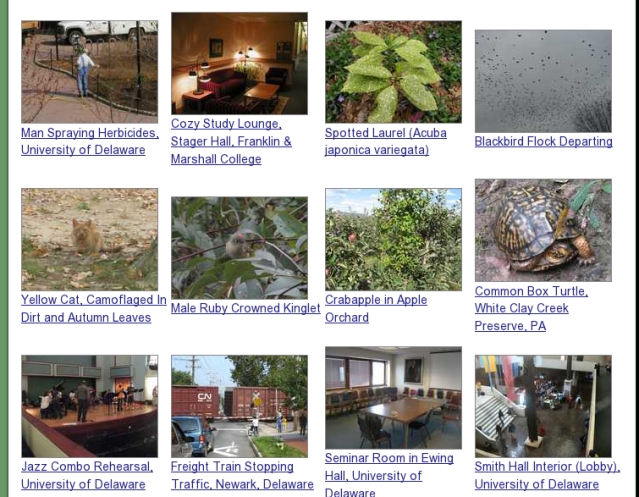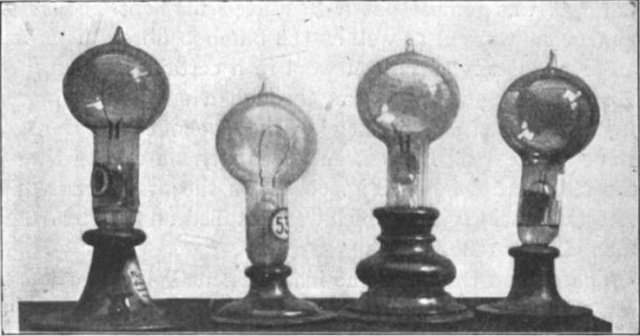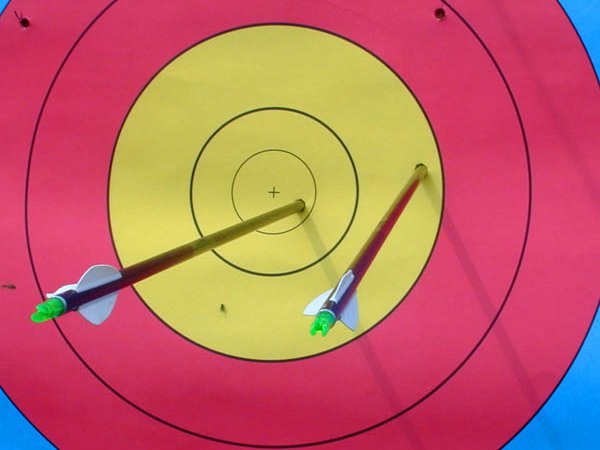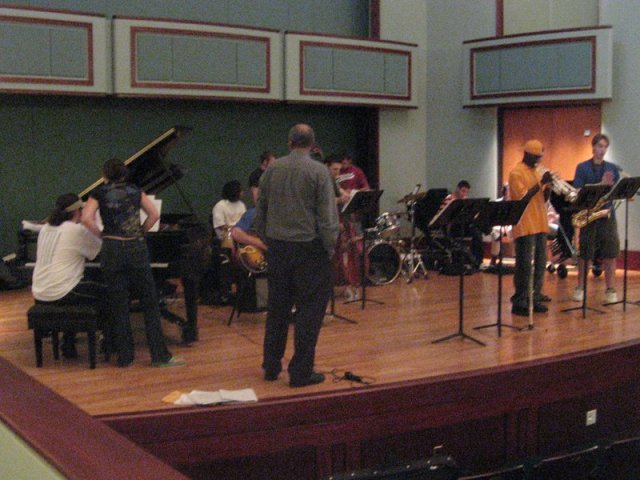As subscribers to this blog may have noticed, this blog, which had always only been updated irregularly, has been inactive for an unusually long time. There have been a lot of things that I’ve been working on during this time, but the one that I feel most passionate about and that has engaged much of my creative energy is called Why This Way.
It’s a little hard to describe what Why This Way is, but in many ways, it is a natural outgrowth of the approach of this blog: building consensus between people with different perspectives, and aiming to solve problems and bring society into a healthier state of being. I sometimes describe it as a consensus-based belief system and organization–a little like an analogue of organized religion that is structured more like Wikipedia.
I have felt encouraged and inspired by the extent of the belief system that we’ve been able to develop and agree upon by consensus, especially given the wide variety of different religious and non-religious backgrounds of the people who have become involved in the group.
The group’s name can be read as a question.
For almost three months, our group existed and operated without a name, until we agreed on one by consensus. Once the idea for the name came up, we quickly agreed that it seemed fitting. The name hints at both questions and statements:
- “Why do we do it this way?”
- “Why would one want to do it this way?”
- “Why do it this way at all, why not do it another way?”
- “Here’s why we do it this way.”
- “This could be a good reason to do it this way.” etc.
The name is intended to capture, communicate, or connote both the fact that our group emphasizes questioning, and that we have extensive reasoning behind all the things that we have chosen to include in the group’s beliefs and practices. In a broader sense, the name is also intended to draw attention to thinking about the “why” in general. For example, our group emphasizes the idea that people tend to have reasons behind their beliefs, and that it can be helpful to draw attention to this reasoning.
Awareness of the “why” can help solidify or strengthen beliefs that people really want to hold. But it can also help people to root out maladaptive behaviors or beliefs that are problematic or untruthful. The group draws attention to cases when people follow practices or beliefs merely out of what we call a “vague sense of obligation”, a sort of societal pressure that is often unconscious.
Building Consensus
Why This Way is run by consensus, but more than just being consensus-run, different aspects of the group have been designed so as to integrate the philosophy and approach of consensus (and the related idea of consent) into the belief system and the way of communicating.
The group is based on basic observations that most people can agree on. These are called starting points; one of them is illustrated here:
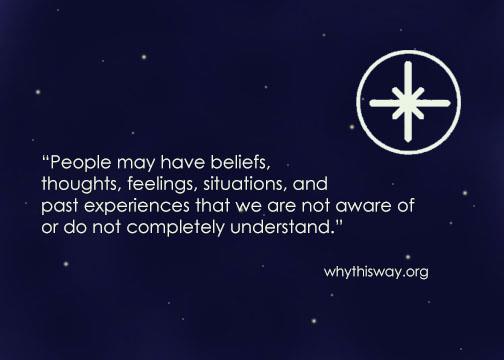 Many of the central ideas in the group, such as the idea shown above, are ones that are pretty obvious, but that people often lose sight of, especially in situations of conflict, stress, or anxiety. One of the ways our group works is by continually drawing attention to these points so that we can discuss things (and act) in ways that are more rational and more constructive.
Many of the central ideas in the group, such as the idea shown above, are ones that are pretty obvious, but that people often lose sight of, especially in situations of conflict, stress, or anxiety. One of the ways our group works is by continually drawing attention to these points so that we can discuss things (and act) in ways that are more rational and more constructive.
When there is a point of disagreement, rather than arguing back and forth to try to prove the correctness of one view (or the incorrectness of another), the goal in our discussion is for each person present to understand the other person’s perspective as fully as possible, and to distinguish between where they agree and where they disagree. As a group, we word our beliefs, practices, and official statements so as to describe the diversity of viewpoints as accurately as possible.
A Specific Way of Communicating
One of the centerpieces of Why This Way is a set of rules called the rules of communication. An initial set of rules, similar in spirit to the currently existing rules, were agreed upon by consensus at the first meeting. The group has refined these rules over time. The rules are quite strict, and difficult to follow. They serve many goals, including:
- Promoting an atmosphere of mutual respect, where people don’t feel like they are being told they are wrong just for having a different perspective.
- Promoting truthfulness in dialogue, keeping grossly untruthful statements out of the group to as great a degree as possible, and helping people to more easily discern the truthfulness of various statements.
- Drawing attention to the boundaries between subjectivity and objectivity of beliefs, and helping people in the group to become aware of exactly how and when and where their beliefs differ from others in the group.
Explaining the rules and their implications fully would take pages, but I want to summarize a few of the major ones:
- Negative Labelling – The rules prohibit attaching negative labels to people or groups of people. Besides prohibiting many forms of insults, this prohibits the practice of identifying people with or defining people by their flaws. For example, we can say that a person’s words or actions are racist, but we cannot say that the person is racist. Similarly, we can say that a person committed a crime, but we cannot call them a criminal.
- Statements about other people’s thoughts, intentions, or motivations – One of the toughest rules to follow is one prohibiting making statements about other people’s thoughts, intentions, or motivations. We allow for general observation and speculation about human psychology, but not the reading of specific thoughts or intentions into a specific person. This rule has many purposes. One purpose is to keep the dialogue focused on observable reality, as we can directly observe a person’s words and actions, but only the person themselves can observe their own thoughts. Another purpose is to respect psychological boundaries, which can be related to issues of privacy and consent in sharing thoughts. Still another is to prevent the reading of negative intentions into people’s actions, which can lead to demonization and conflict and can hinder progress at achieving goals or influencing people in positive ways.
- Should statements – Our group has rules that prohibit using should statements, which include both the word “should” and ideas expressing equivalent ideas, such as “ought to”, “supposed to”, or the idea that someone “deserves” something. Although we don’t necessarily consider the word “should” to always be problematic in dialogue, we want our dialogue to get more specific. A statement like “we should do this” can mean: “I want to do this”, but it could also mean: “I need to do this do achieve a specific outcome.” or “I think it would be good for me to do this.”, or even “I feel a vague sense of obligation to act in this manner.” We want our rules to help people communicate in a way that distinguishes between these different uses of the word.
What is Why This Way doing?
So far, Why This Way has mostly focused on the development of a system of beliefs and practices that the individual participants in the group can put into use in their lives. Much of the discussion, and the writing on the wiki, has focused on things that anyone can put into practice in their daily life.
In addition to the Wiki, the group also has some larger projects, for the long-term, which I want to mention:
- An educational philosophy and system – Although it is in its very early stages, we have begun discussing and developing a philosophy of education that is based on our core beliefs. This discussion has two goals: one, to help people such as students, teachers, and parents to make the best of the current educational systems in society, and two, to eventually create or inspire schools or systems of education of our own.
- Sustainable gardening and landscaping – Sustainability is a key aspect of the system of beliefs and practices in Why This Way, and one way this has played out is that the group has designed a set of practices for sustainable gardening and landscaping. We have begun to implement these, with planting of native plants on two different properties, with the goal of creating sustaining semi-wild environments in each case: the flower beds of an apartment building in West Philadelphia, and a suburban yard at one of the houses where we hold regular meetings.
- Press and media – Communication is a key focal point of Why This Way, and explicit discussion of the media and press, as well as discussion of the culture of electronic communication and social media, has come up in many of our meetings. Our group already has an extensive wiki which has a much wider reach than the people who physically attend our meetings. In addition, many of our members are active bloggers, and have both written about the ideas in our group (Babies and Bathwater is one example of such a blog), as well as having had ideas in our group shape our writings on other topics. We have also discussed, for the long run, the possibility of later creating news media that is in harmony with our value system.
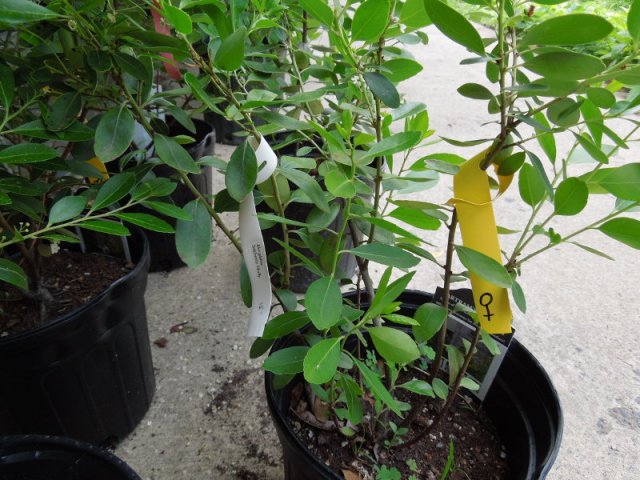
After discussing and agreeing upon principles of sustainable landscaping in Why This Way, two of us used these principles as a guide to inform our purchase of plants to landscape an apartment building in West Philadelphia. Pictured here are Inkberry holly bushes from Bartram’s Garden Nursery: these are one of the native plants we chose.
We are hoping that as our group grows, we will have more resources to be able to tackle more ambitious projects like these. I have already been impressed with what our group has been able to achieve with our current level of participation.
What can you do?
If you are interested in our group, and if you want to either learn more or contribute, there are many ways you can get involved.
- Read our wiki – Our wiki houses the most up-to-date official writings of our group. It is a good way to both see what we’ve been resolving and discussing, as well as to get a better sense for how our value system fits together. You can also search for specific topics on the wiki, to see if we’ve discussed them or have any viewpoints on them.
- Talk to us – Why This Way is based on dialogue, which not only includes group discussions, but also one-on-one conversations about the group and its ideas. Talking to people about our group and the ideas in the group is one of the best ways to learn about it, and may lead to a deeper understanding than just reading the wiki.
- Offer feedback – Our group is based on ongoing questioning, discussion, and refinement of our ideas. If you see something that you think you could improve, that you think is problematic, or a topic that you don’t see covered that you want us to discuss and write about, or elaborate on, please get into contact with us!
- Get involved locally – We currently have regular meetings in the city of Philadelphia and in its northern Suburbs, as well as semi-regular meetings in northern Delaware. If you live in this area, you can come to our meetings or meet with us to talk about our ideas. If you live farther away, there are still ways you may be able to get involved. Perhaps you could meet up with one or more people in our group when we travel, and we also have ways which people can get involved remotely.

